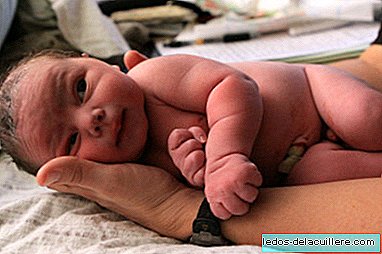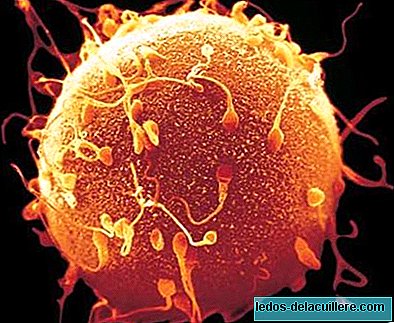
Experts in pediatric psychiatry, neurology and medicine have long insisted on how important the experiences in cognitive and emotional development of the early years are for a child. In fact, there are proven cases of children who lived in orphanages and were deprived of affection and ended up dying without any explanation even though the rest of their basic needs were covered.
In line with this, Salk Institute scientists have just published a new study in which they suggest that The type of maternal care during the first years can cause changes in the DNA of your children.
The objective of the study, carried out with mice, seeks to verify how the environment in which childhood develops affects the brain of human beings and could provide information on neuropsychiatric disorders such as depression and schizophrenia.
DNA changes
For at least a decade, scientists were certain that most mammalian brain cells underwent changes in their DNA, thus causing each of us to be different from the others. These changes are sometimes caused by jumping genes or better known as LINEs. They are elements that have the ability to copy, duplicate and insert themselves in other parts of the genome and make each neuron different from another although they both belong to the same person.
"They teach us that our DNA is something stable and immutable that makes us what we are, but in reality it is something much more dynamic. It turns out that there are genes in your cells that are capable of copying and moving, which means that, of some way, your DNA does change, "says Rusty Gage, a professor at the Salk Genetics Laboratory.
It was in 2005 when Professor Gage's laboratory discovered that a jumping gene called L1, could jump in the development of brain neurons.
Although they already knew that the cells could acquire changes in the DNA, the scientists considered that perhaps it was not a random process but that it depended on factors that affected the brain or the environment itself. Then, different questions began to arise: why do these genes jump? Is it a random process or are there factors that cause these changes to occur? What consequences do these genes have on the brain and on the cognitive abilities of the individual?
How does the type of maternal care affect
In order to reach valid conclusions, Gage and his team conducted studies with two groups of mice. In the first there were offspring that were exposed to great stress and in a second group were others who received satisfactory experiences.
Later, when these mice were adults, they observed that they had different jumping genes in the brain but could not confirm 100% that it was due to stress or positive experiences.
It was then that they saw that there was differences in how they treated their young and they began to study the DNA of the hippocampus, the region of the brain involved, among others, in emotions or memory.
Thus, they discovered that there is a correlation between maternal care and the copy number L1that is, mice with attentive mothers had fewer copies of the L1 jumping gene and those with more stressed mothers had more L1 copies, and therefore more genetic diversity in their brains.
To ensure that these results were not the result of a coincidence, a series of control experiments were carried out also analyzing the father's DNA from the litter to ensure that the children did not inherit the L1 from a single parent.
They also encouraged a cross breeding, that is, those mice born to less careful mothers were raised by attentive mice and vice versa in order to reach conclusions regarding the correlation between L1 numbers and maternity style. The results were that mice born to careless mothers but raised by attentive ones were those that had less copies of L1 than mice born to attentive mothers but raised by those who felt most detached.
The environment in childhood and changes in DNA
Thus, the researchers hypothesized that mice whose mothers were less loving were more stressed and that in some way, this caused genes to copy and move more frequently. Interestingly, there was no similar correlation between maternal care and the number of other known jumping genes, which suggested a unique role for L1.
These investigations could be related to studies of child abandonment which also show altered patterns of DNA methylation for other genes, as Gage has or as a strategy to address neurodegenerative diseases.
These investigations come to argue the idea of how childhood environments affect brain development, as well as could provide very valuable information about neuropsychiatric disorders such as depression and schizophrenia.












